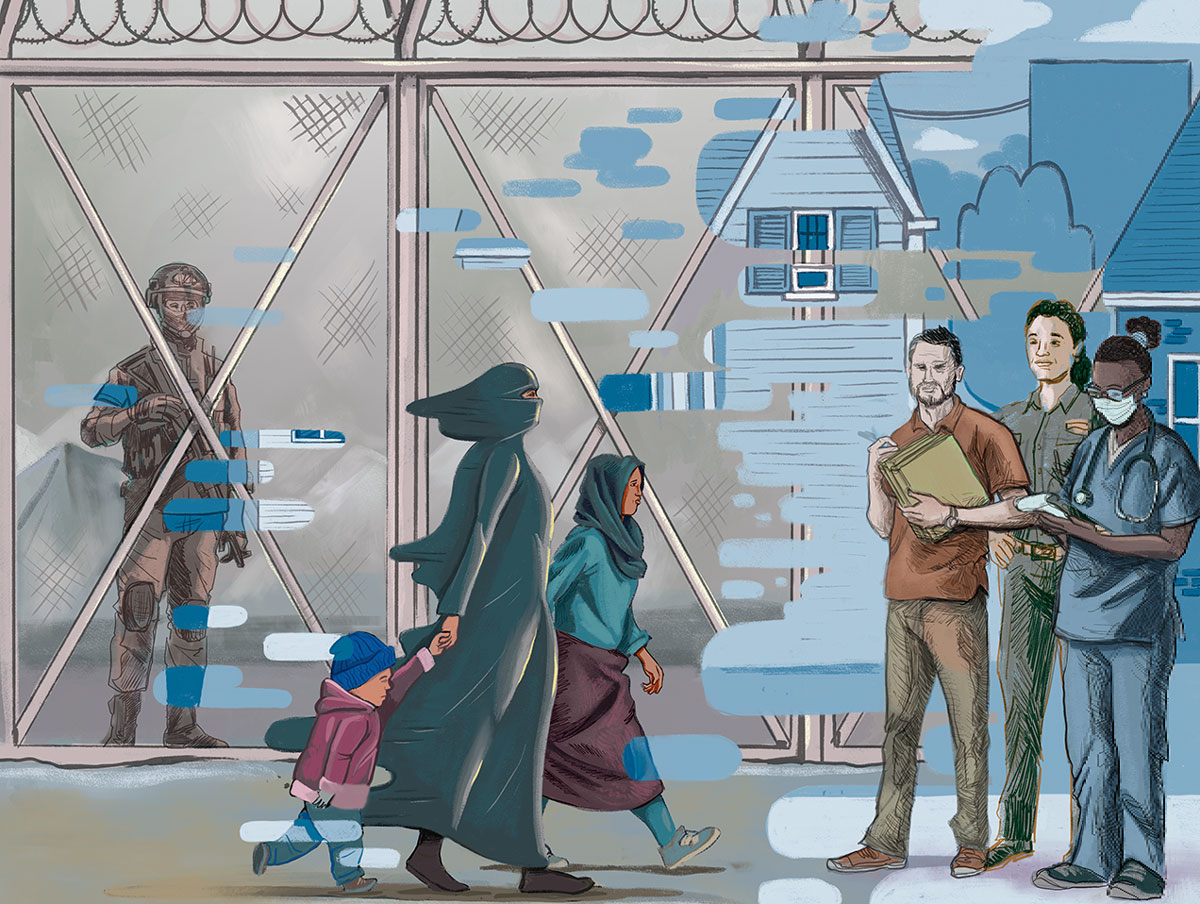This report outlines a comprehensive framework of best practices in the reintegration of foreign terrorist fighter spouses and children (i.e., “the FTF family”). It collates and synthesizes a suite of interlocking principles to guide reintegration policy and implementation, covering practical challenges and programmatic objectives, the organizational structure and process of reintegration management in the U.S. context, the role of strategic communications and trauma-informed care, and the use of specialized risk assessment tools. Drawing on original work conducted in previous investigative streams, this report combines scholarly analyses from both theory and practice, interviews with practitioners and stakeholders, case study investigations, and the authors’ collective experiences in the field. Four key findings are central to this report.
First, overarching policy and programmatic planning must take into account a suite of core objectives that are central to the reintegration of FTF families. Four main categories of objectives emerge within which are a range of policy and programmatic goals: align domestic policy and programmatic responses with the scope and nature of the returnee problem, develop a strategically guided approach to reintegration, integrate existing legal bases and systems of reintegration, and consider how FTF management may be instrumentalized towards broader policy objectives. These core objectives provide a compass for guiding how policymakers and practitioners navigate through the complex and interrelated challenges associated with reintegration work. Moreover, in order to achieve the goals and objectives outlined above, this report has identified a set of best practices relating to the formal structures and roles and responsibilities assigned to the reintegration mission community in the U.S.
Second, we argue that the coordination and efficacy of reintegration activities can be improved with a greater focus on the role of strategic communications at the overarching planning and management level. It is broadly recognized that reintegration efforts should not be stovepiped. Less acknowledged is the role that a robust and integrated approach to strategic communications can play in helping to improve the sequencing and synchronicity of standard programming activities. This coordination issue also extends to how the age, gender and psychosocial needs of FTF returnees and their families are addressed.
Third, we highlight the need for better incorporation of gender, age, and trauma-informed considerations at the program and case levels. The synthesis of trauma-informed approaches during the repatriation and reintegration process is vital and case managers must be appropriately equipped to develop tailored plans that harness gender, age, and familial factors too. Together, the coherent integration of compatible reintegration efforts and supporting activities will enable a more strategically focused approach.
Finally, this report presents the broad parameters of a risk assessment tool for assessing FTF returnees and their families based on the project’s multidisciplinary and multisectoral findings. The framework is underpinned by a rigorous methodology and an evidence-based theory of change. However, it also seeks to be accessible and adaptable to ensure usability. The development and further refinement of this risk assessment instrument presents a promising avenue for future applied research.


